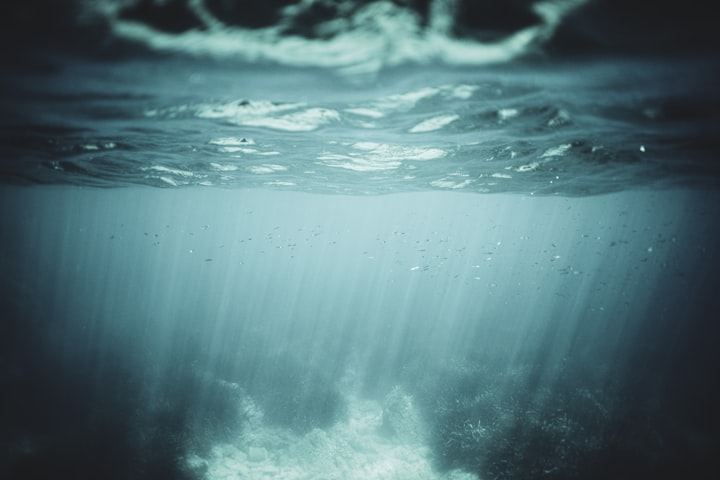Unveiling the Mysteries of the Deep
A Journey into Earth's Dark Abyss

The vast expanses of the world's oceans remain largely unexplored, with depths beyond 3,500 meters offering the promise of discovering new, undiscovered species.
However, along with the potential for scientific revelations, deep-sea dives also reveal the unsettling truth of debris and garbage littering the ocean floor.
Covering over 70 percent of the Earth's surface, oceans boast an average depth of around 3.7 kilometers.
As light penetration is limited to the first 100 meters, the vast majority of the ocean exists in perpetual darkness.
Ocean beds account for nearly 96 percent of the Earth's water, with only a small fraction being freshwater.
The underwater world supports an incredible diversity of life, with 94 percent of all life on Earth residing in water.
This implies that terrestrial life is a minority in comparison to aquatic life forms. Yet, despite the oceans being a vital part of our planet, they remain one of the least understood and explored environments.
As we delve into the ocean depths, mysteries unfold, challenging our understanding of the planet.
Surprisingly, we have more knowledge about the surface of Mars than the ocean floor. The lack of light and extreme pressure in the deep ocean make exploration challenging.
Embarking on a journey into the ocean's depths, we encounter various depth milestones:
At 40 meters, we reach the maximum depth for pearl collectors, beyond which increasing water pressure limits recreational diving without scuba equipment.
The layer up to 200 meters is where 90 percent of aquatic life thrives, supported by light penetration that allows for the growth of phytoplankton.
However, the Twilight Zone, also known as the mesopelagic zone, is a layer of the ocean that extends from approximately 200 meters (656 feet) to 1,000 meters (3,281 feet) below the surface.
This zone is characterized by diminishing levels of sunlight as you descend, leading to a gradual decrease in temperature and a shift in the types of organisms that can thrive there.
Key features of the Twilight Zone include:
Decreasing Light Levels: As you descend into the Twilight Zone, sunlight diminishes rapidly. While some natural light penetrates this depth, it is not sufficient for photosynthesis to occur.
Beyond 200 meters, the ocean becomes progressively darker, and reliance on bioluminescence becomes more prevalent.
Bioluminescent Adaptations: Many organisms in the Twilight Zone have developed the ability to produce bioluminescent light.
This adaptation serves various purposes, including attracting prey, deterring predators, and communication. Bioluminescent organisms in this zone include various types of jellyfish, squid, and other deep-sea creatures.
Migration Patterns: Some marine species, such as certain types of fish and zooplankton, exhibit vertical migration patterns, moving up towards the surface at night to feed and descending to deeper waters during the day to avoid predation.
This behavior is often linked to the availability of food and the avoidance of visual predators during daylight hours.
Adaptations to Low-Light Conditions: Organisms in the Twilight Zone have evolved specific adaptations to low-light conditions.
Enhanced sensitivity to minimal light, large eyes, and light-producing organs are common features among these species. These adaptations allow them to navigate, communicate, and locate prey or avoid predators in the dimly lit environment.
Limited Human Exploration: Due to the challenges posed by the lack of natural light, extreme pressure, and low temperatures, the Twilight Zone has been less explored by humans compared to shallower depths. Exploration often requires specialized equipment such as submersibles, remotely operated vehicles (ROVs), or autonomous underwater vehicles (AUVs).
The Mariana Trench, the world's deepest ocean trench, however, reaches depths of over 10,000 meters, with Challenger Abyss and Siren Abyss being prominent features.
Exploring the Mariana Trench, we find geological marvels like Daikoku Volcano and Black Smokers, contributing to the diversity of life. Despite initially perceived inhospitable conditions, life thrives even in the Challenger Abyss.
Moving to the opposite side of the globe, the Puerto Rican Trench reveals its unique tapestry, including a dense geological formation impacting navigation accuracy. The trench's fauna surprises scientists with unexpected species thriving at extreme depths.
Lastly, the Kermadec Trench, comparable in size to the Mariana Trench, introduces unique species, such as the giant amphipods and the elusive pearlfish, challenging scientists to reevaluate their understanding of deep-sea survival.
In conclusion, our exploration of the ocean's depths not only sheds light on the mysterious and alien life forms thriving in extreme conditions but also emphasizes the urgent need for continued research and conservation efforts to protect these delicate ecosystems.





Comments
There are no comments for this story
Be the first to respond and start the conversation.